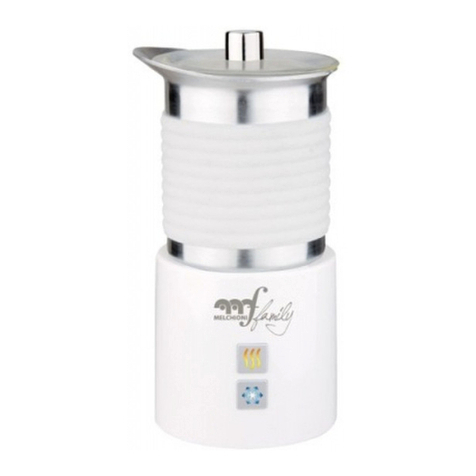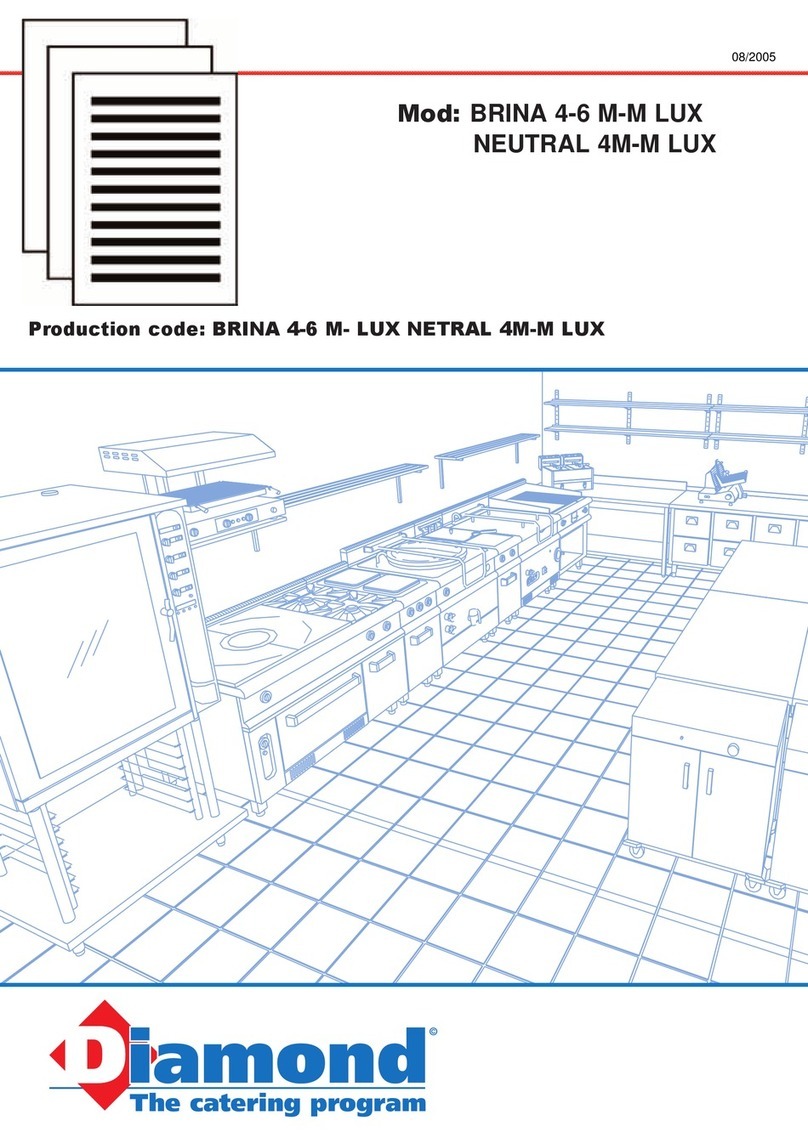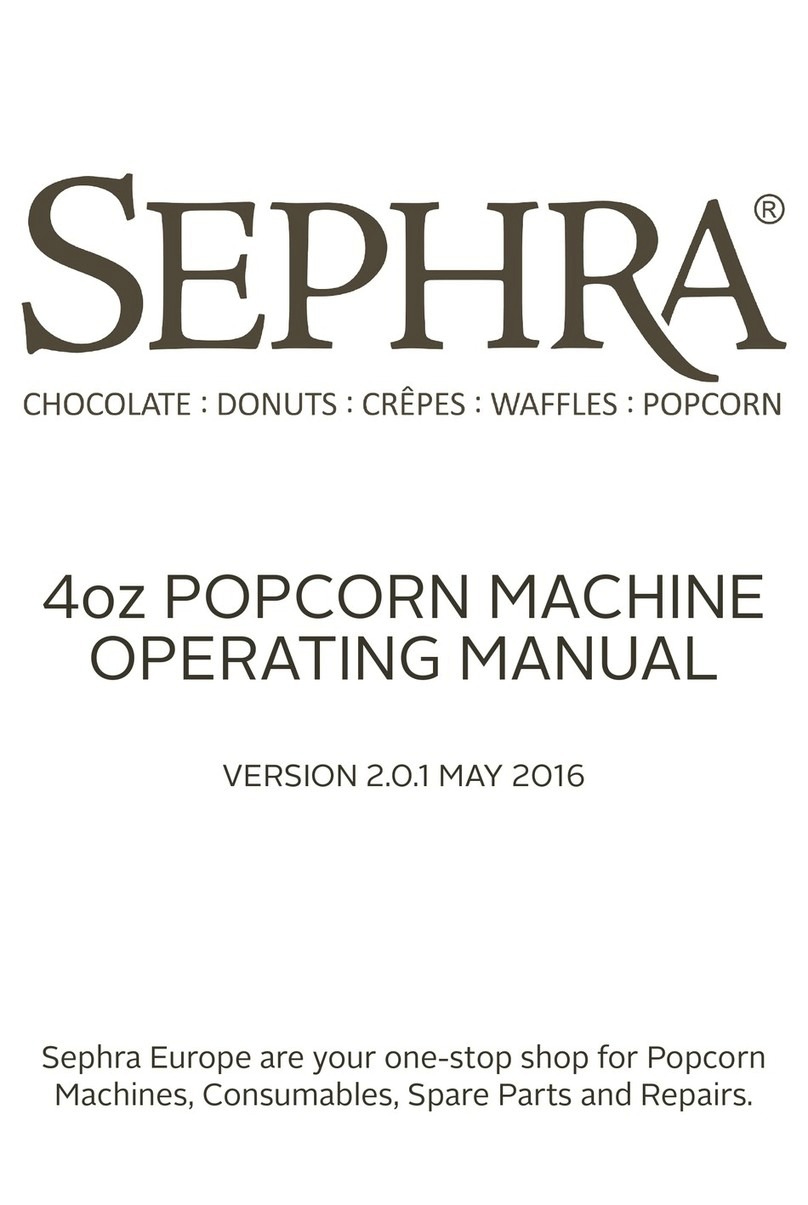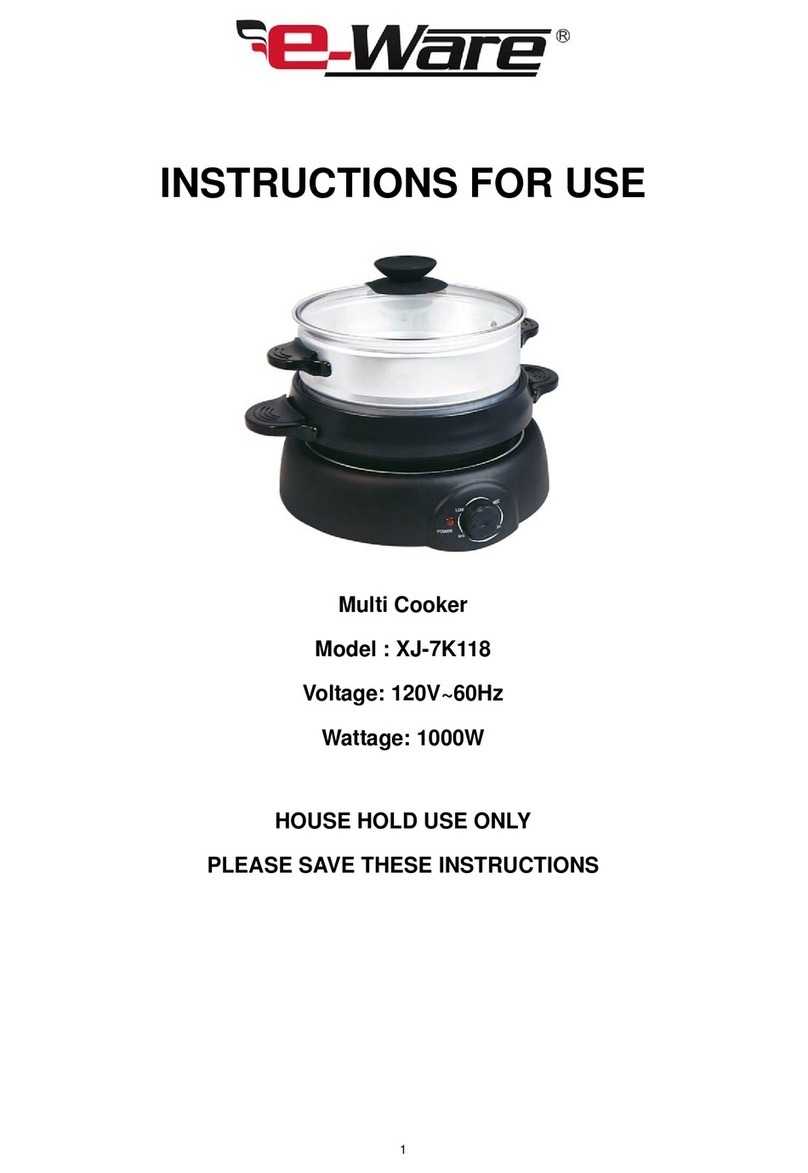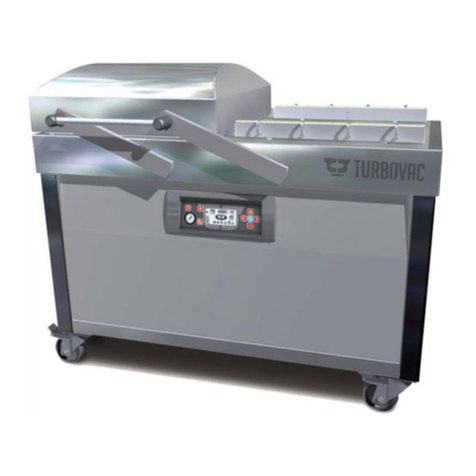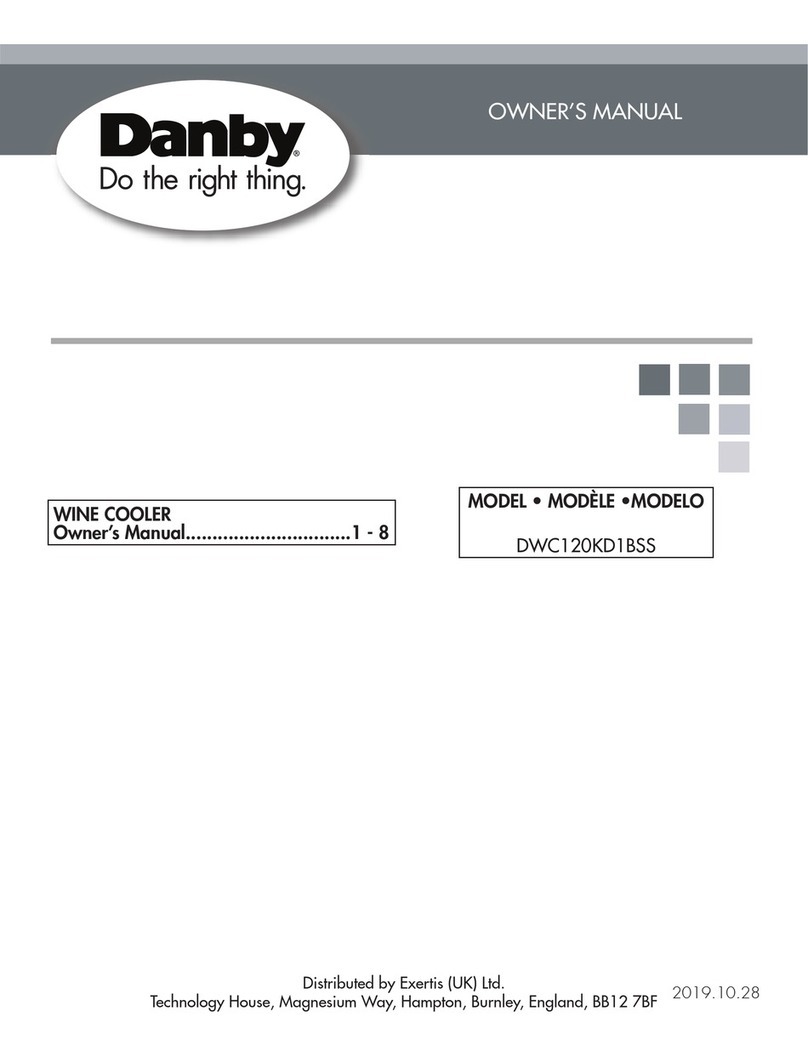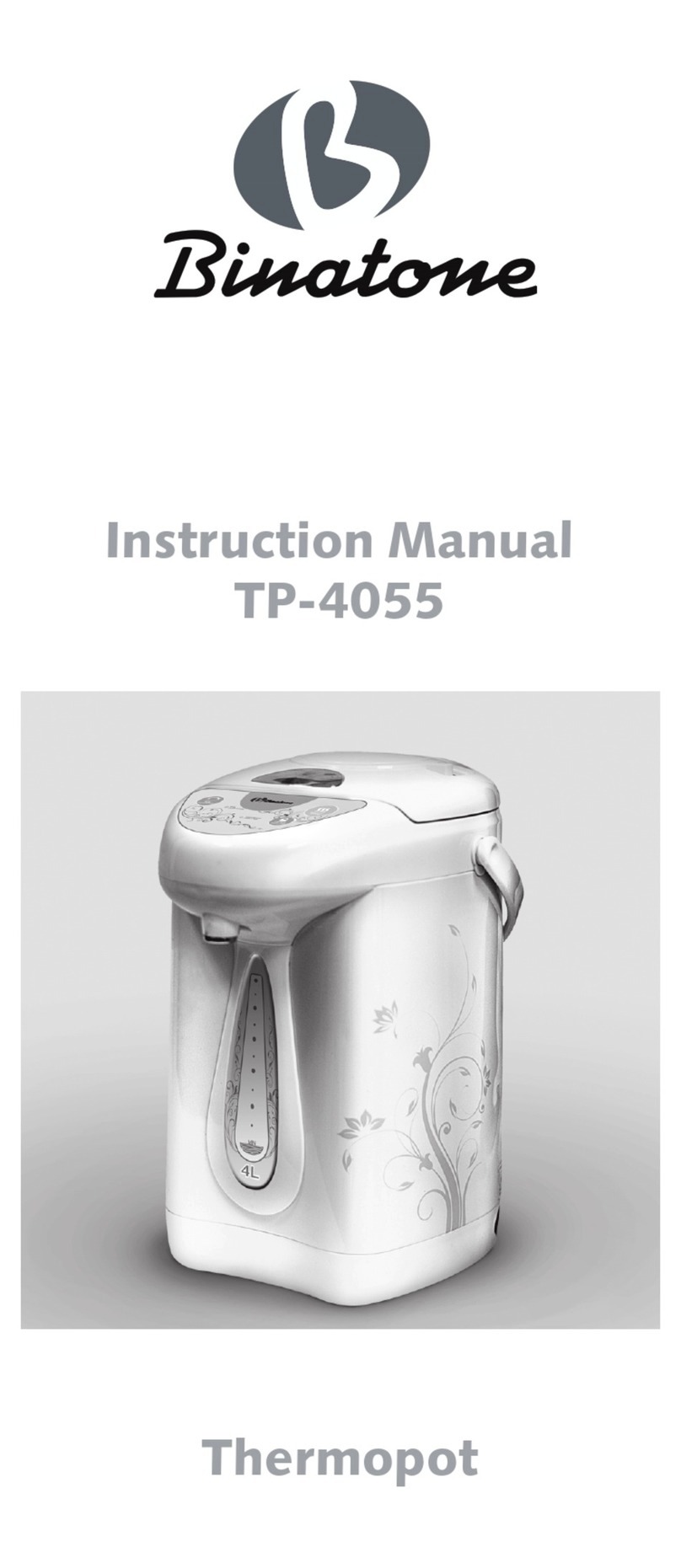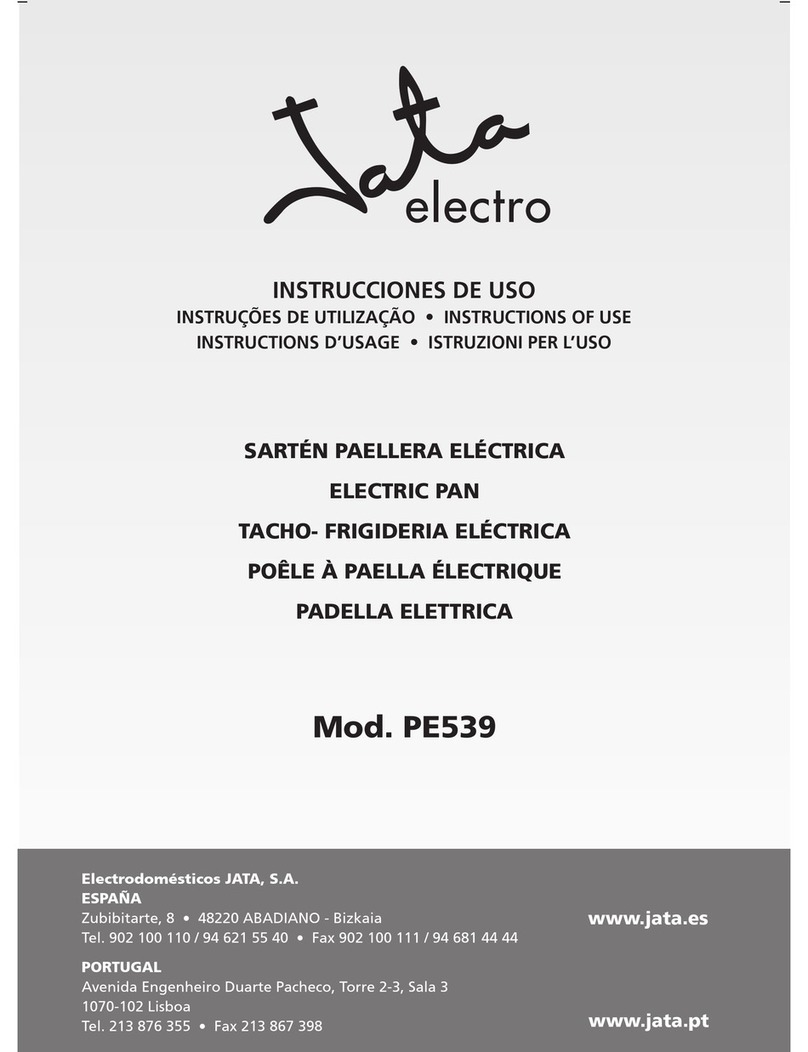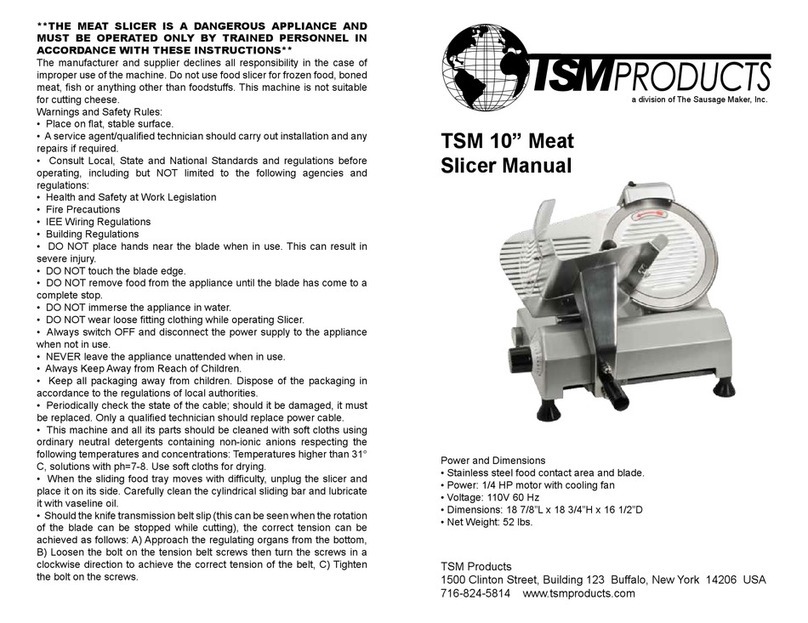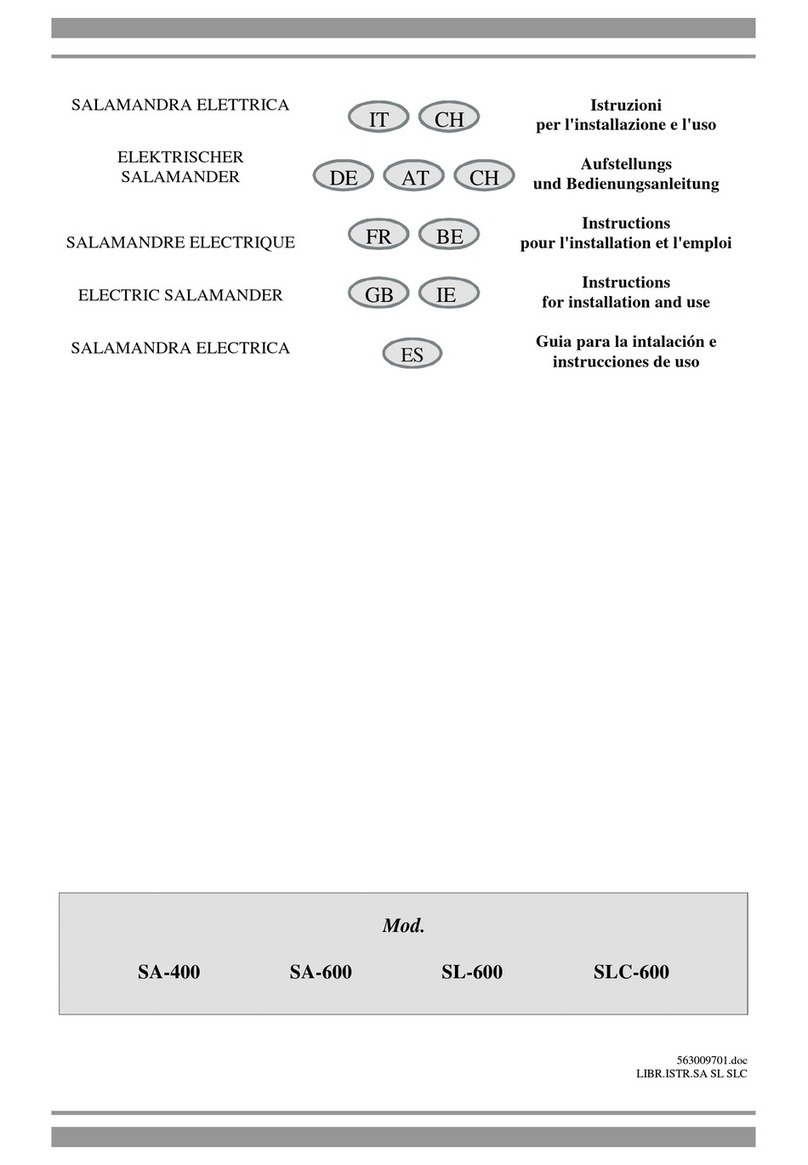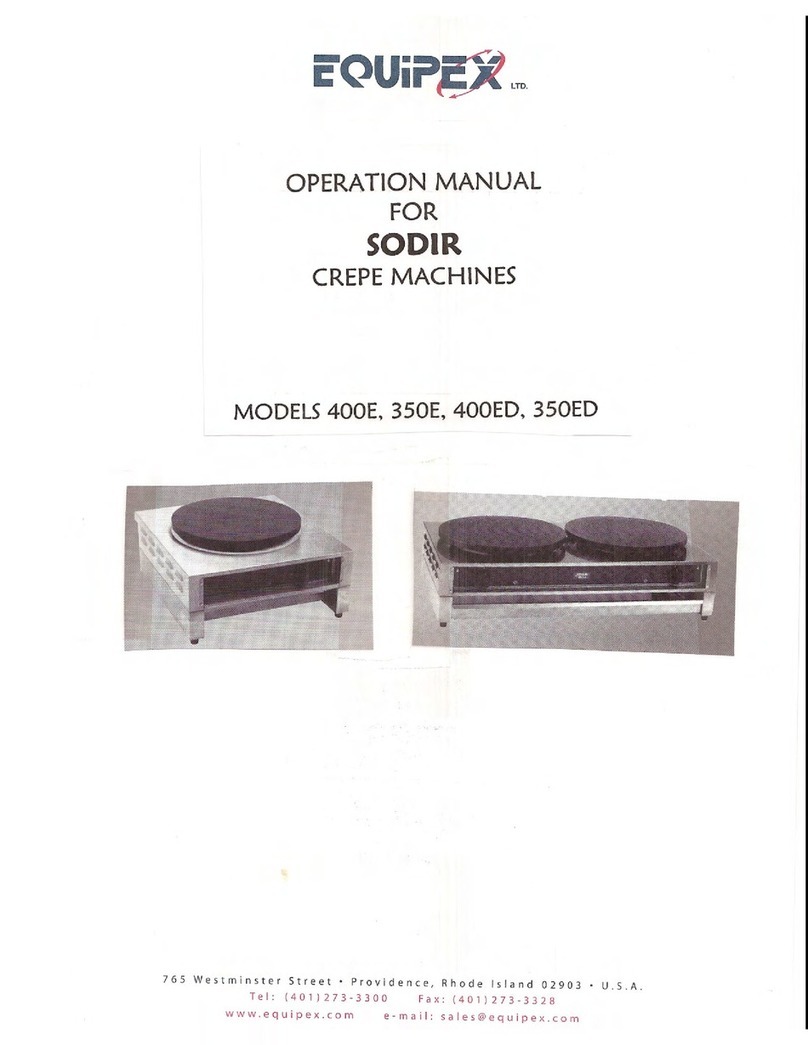FOOING FY-70A User manual

COMPRESSOR WINE COOLER
User Manual
Model:FY-70A / FY-90A / FY-150B
Please read this user manual before using this product


CONTENT
1. Before First Use....................................................................................4
2. Important Safety Measures and Instructions...................................4
3. Warning and Cautions......................................................................... 5
4. Specifications........................................................................................ 6
5. Device Overview...................................................................................7
6. Before Initial Operation........................................................................9
7. Temperature Setting.......................................................................... 10
8. Operation............................................................................................. 11
9. Energy Saving....
.................................................................................11
10. Cleaning and Maintenance.............................................................11
11. How to Move the Appliance............................................................12
12. Installation......................................................................................... 12
13. Trouble Shooting...................
........................................................... 16
14. Decommission.................................................................................. 17
15. Electrical Circuit Diagram............................................................... 18

4
Thank you for choosing our product. If operated and taken care of properly in
accordance with these instructions, this appliance will be useful for many years.
1. Before First Use
Before first use, remove any stickers or similar from the appliance except for the
rating label.
Dispose of any plastic bags as they pose a risk of suffocation to young children.
Please read this manual before operating the appliance and keep it in a safe place for
future reference. If this appliance is transferred to a new owner, the manual should
also be provided to the new owner. If you ignore the safety instructions, you will
endanger your health and life.
2. Important Safety Measures and Instructions
Before operating the appliance, check if the voltage indicated on the appliance’s
technical plate corresponds to the voltage of the electricity supplied to your home.
Check the technical periphery of the appliance. Do all wires and connections to the
appliance work properly? Or are they time-worn and do not match the technical
requirements of the appliance? A check-up of existing and newly made connections
must be done by an authorized professional. All connections and energy-leading
components (incl. wires inside a wall) must be checked by a qualified professional.
All modifications to the electrical mains to enable the installation of the appliance
must be performed by a qualified professional.
This appliance is intended for private use only.
This appliance is intended for cooling wine in a private household only.
This appliance is for indoor use only.
This appliance is not intended to be operated for commercial purposes,during
camping or in public transport.
Operate the appliance in accordance with its intended use only.
Do not allow anybody who is not familiar with this instruction manual to operate the
appliance.
This appliance may be operated by children aged from 8 years and above as well as
by persons with reduced physical, sensory and mental capabilities or lack of
experience and knowledge if they are supervised or have been instructed concerning
the safe use of the appliance and do comprehend the hazards involved. Children
must not play with the appliance. Cleaning and user maintenance must not be carried
out by children unless they are supervised.
Ambient temperature below 10°C or above 32°C will hinder the performance of the
appliance.

5
EXPLOSION HAZARD
Do not store any explosive materials or sprays that contain flammable propellants in your appliance.
3. Warning and Cautions
Do not connect the appliance to the mains if the appliance itself or the power cord or
the plug are visibly damaged.
Never try to repair the appliance yourself. If the appliance does not operate properly,
please contact the shop you purchased the appliance at. Original spare parts should
be used only.
When the power cord is damaged, it must be replaced by the manufacturer or an
authorized after sales service or a qualified professional only.
If any part of the cooling circuit is damaged, the appliance must not stand near a fire,
naked light or spark-generating devices. Contact the shop you purchased the
appliance at immediately.
Keep all components of the appliance away from fire and other sources of ignition
when you dispose of or decommission the appliance.
Do not install the appliance near volatile or combustible materials (e.g. gas, fuel,
alcohol, paints) or in rooms which may have poor air circulation (e.g. garage).
Do not connect the appliance to the electric supply unless all packaging and transit
protectors have been removed.
Operate the appliance with 110–120V AC 60Hz only. All connections and
energy-leading components must be replaced by an authorized professional.
Do not use a socket board or a multi socket when connecting the appliance to the
mains.
A dedicated and properly grounded socket meeting the data of the plug is required to
minimize any kind of hazard. The appliance must be grounded properly.
Check that the power cord is not placed under the appliance or damaged when
moving the appliance.
The technical data of your energy supplier must meet the data on the model plate of
the appliance.
Your domestic circuit must be equipped with an automatic circuit breaker.
Do not modify the appliance.
RISK OF ELECTRIC SHOCK
Turn off the power before you install the appliance and before you connect it to the mains. Do not
use any steam cleaners to clean or defrost the appliance. The steam can get into contact with the
electrical parts and cause an electrical short. Never use mechanical devices, knives or other sharp-
edged items to remove encrusted ice inside the appliance.

6
Disconnect the appliance from the mains before you clean or maintain it.
Do not use any electric appliances inside the food storage compartments of your
appliance unless they are recommended by the manufacturer of your refrigerator.
Do not put any heat-radiating appliances onto your appliance.
Do not install the appliance in a place where it may come in contact with
water/rain, otherwise the insulation of the electrical system will be damaged.
Do not put a water-boiler or vases onto your appliance. The electrical components
of your appliance can be seriously damaged by water over- boiling or spilled
water.
Children must never play with the appliance.
If you decommission your appliance (even temporarily), ensure that children
cannot get into the appliance.
Do not touch the extremely cooled surfaces with wet or damp hands, because
your skin may stick on these surfaces.
When you move the appliance, hold it at its base and lift it carefully. Keep the
appliance in an upright position.
Never use the door for moving the appliance as you will damage the hinges.
Do not operate the appliance unless all components are installed properly.
Do not stand or lean on the base,the drawers,the doors etc of the appliance.
Do not put hot liquids or hot foodstuff into the appliance.
4. Specifications
MODEL
FY-70A
FY-90A
FY-150B
VOLUME
59L
81L
150L
VOLTAGE
AC 110V
AC 110V
AC 110V
FREQUENCY
60Hz
60Hz
60Hz
PROTECTION TYPE
I
I
I
CLIMATE CLASS
SN.N
SN.N
SN.N
INPUT POWER
90 Watt
90 Watt
90 Watt
ENERGY CONSUMPTION
0.55Kw.h/24h
0.59Kw.h/24h
0.91Kw.h/24h
TEMPERATURE RANGE
40-66℉(5-18℃)
40-66℉(5-18℃)
Upper zone:40-50℉(5-10℃)
Lower zone:50-66℉(10-18℃)
NET WEIGHT
60 lbs
70 lbs
103.6 lbs
PRODUCT DIMENSION
W11.6 x H33.9 x D22.4 inches
W14.8 x H33.9 x D22.4 inches
W23.4 x H33 x D22.4 inches

7
5. Device Overview
Model No.: FY-70A
1. Upper Hinge
2. Lighting Switch
3. Temp. Button
4. Display
5. Temp. Button
6. ℉/℃Switch
7. LED Light
8. Cooling Fan
9. Carbon Filter
10. Temp.Sensor
11. Evaporator
12. Shelf
13. Exhaust Window
14. Foot
15. Door Seal
16. Glass
17. Handle
18. Down Hinge
19. Lock

8
Model No.: FY-90A
1. Upper Hinge
2. Lighting Switch
3. Temp. Button
4. Display
5. Temp. Button
6. ℉/℃Switch
7. LED Light
8. Cooling Fan
9. Carbon Filter
10. Temp.Sensor
11. Evaporator
12. Shelf
13. Exhaust Window
14. Foot
15. Door Seal
16. Glass
17. Handle
18. Down Hinge
19. Lock

9
Model No.: FY-150B
1. Temp.Sensor
2. LED Light
3. Carbon Filter
4. Cooling Fan
5. Temp.Button
6. Evaporator
7. Temp.Button
8. ℉/℃Switch
9. LED Light
10. Temp.Sensor
11. Lighting Switch
12. Cooling Fan
13. Shelf
14. Evaporator
15. Exhaust Window
16. Foot
17. Glass
18. Door Seal
19. Handle
20. Down Hinge
21. Lock
6. Before Initial Operation
Leave the appliance in an upright position for 4–6 hours before you connect it to the
mains.
Clean the appliance thoroughly. Be very careful, especially inside the appliance (see
chapter Cleaning and Maintenance).
The appliance must be connected to the mains properly.
Allow the appliance to stabilize the temperature for approx. 24 h before use.
Do not overfill the appliance.

10
7. Temperature Setting
Model No.: FY-70A & FY-90A
Temperature range: 40-66℉(5-18℃).
Flashing LED = Setting mode of the temperature.
Constant LED = Cooling temperature.
Model No.: FY-150B
Temperature range: Upper Zone:40-50℉(5-10℃);Lower Zone:50-66℉(10-18℃)
Flashing LED = Setting mode of the temperature.
Constant LED = Cooling temperature.
Upper Zone
Display
Lower Zone
Display
Lower Zone
Temp. Increase
Upper Zone
Temp. Decrease
Lighting
Switch
℉/℃
Switch
Temp.
Display
Lighting
Switch
Temp.
Increase
Temp.
Decrease
℉/℃
Switch
Lower Zone
Temp. Decrease
Upper Zone
Temp. Increase

11
WARNING
Disconnect the appliance from the mains before you clean or maintain it.
8. Operation
The appliance can only reach the relevant temperatures when:
1. The ambient temperature meets the climatic class.
2. The doors close properly.
3. You do not open the doors too often or too long.
4. The door seals are in proper condition.
5. The appliance is properly positioned.
6. You have not overfilled the appliance.
7. You do not store warm or hot food in the appliance.
9. Energy Saving
Try opening the door as little as possible, especially when the weather is warm and
humid. When you open the door, close it as soon as possible.
Make sure the appliance is always well-ventilated.
Disconnect the appliance from the mains if you do not operate it.
Always keep the door seals clean and in a proper condition.
10. Cleaning and Maintenance
Always keep the appliance clean so that unpleasant odors do not occur.
Dust deposits on the condenser will increase the energy consumption. Clean the
condenser twice a year with a vacuum cleaner or a soft brush.
Take off all rings and bracelets before cleaning or maintaining the appliance,
otherwise you may damage the surface of the appliance.
Detergent
Do not use any harsh, abrasive detergents.
Do not use any aggressive detergents.
Do not use any solvents.

12
External Cleaning
Use a moist cloth and a mild, non-acid detergent.
Use clear water to rinse.
Try the cleaned surfaces with a cloth.
Internal Cleaning
Clean the shelves and the other removable parts with warm water and a mild,
non-acid detergent.
Use clear water to rinse.
Dry the cleaned surfaces with a cloth.
Clean the interior with water and a mild, non-acid detergent.
Use clear water to rinse.
Dry the cleaned surfaces with a cloth.
Check the water drain and clean it if needed.
11. How to Move the Appliance
Remove all bottles.
Securely tape down all loose items inside the appliance.
Turn the level feet up to the base to avoid damage.
Tape the door.
The appliance must be moved in an upright position.
12. Installation
To install the door handle:
For the shipment,the door handle has been stored inside of the binding to the wood
shelves.To install the handle,the door gasket should be gently pulled back where the
screw holes for the handle,then the handle should be attached by screwing with the two
screws which are packed in the box with this instruction manual and other spare parts.

13
To reverse the door swing:
As you received your wine cooler, the door swings open at the left.If you wish to reverse
the swing so that the door opens from the right,it is most important too have at least one
other person to help.It is very dangerous to try to reverse the door swing by
yourself,without anybody’s help the door might fall and glass might be broken,which is
terribly dangerous.
For model FY-70A & FY-90A,unscrew the upper door hinge while the second person hold
the door.Remove the upper hinge and carefully lift the door off the bottom hinge.Unscrew
the bottom hinge and install it on the left side of the unit.Flip the door around so that the
handle is on the right side and slip the door over the bottom hinge.Reattach the door
screwing the top hinge into the holes provided on the upper left surface of the unit.Make
adjustments as necessary to be insure the door is aligned properly.
For model FY-150B,unscrew the lower door hinge while the second person hold the
door.Remove the lower hinge and carefully lift the door off the upper hinge.Unscrew the
upper hinge and install it on the left side of the unit.Flip the door around so that the handle
is on the right side and slip the door over the upper hinge.Reattach the door screwing the
top hinge into the holes provided on the upper left surface of the unit.Make adjustments as
necessary to be insure the door is aligned properly.
Suggest Cabinet Dimension:
FY-70A

14
FY-90A
FY-150B

15
Spare Parts Details:
FY-70A, FY-90A & FY-150B
Spare Parts
Pictures
Use
Upper Hinge
To switch the door open from
right.
Bottom Hinge
To switch the door open from
tight.
Screw x 2
For the handle installation.
Gasket x 2
For the handle installation.
Key x 2
To lock the door.
Big rubber plug x 1
To cover the hole on the left
front corner of the body.
Round rubber plug
(FY-70A & FY-90A) x 2
/
(FY-150B) x 3
To cover the holes on the left
front corner of the body.
Extra coated rack
(FY-70A) x1
To take the place of one
wooden shelf.
Extra coated rack
(FY-90A) x 1
To take the place of one
wooden shelf.
Extra coated rack
(FY-150B) x 2
To take the place of one
wooden shelf.

16
13. Trouble Shooting
POSSIBLE CAUSE
MEASURE
The plug of the appliance is not
connected to the socket.
Check the corresponding socket by
connecting it with another appliance.
The plug has become loose.
Check the fuse box.
•The socket is not supplied with energy.
•The fuse is switched off.
•The voltage is too low.
Compare the data on the model plate with
the data of your energy supplier.
The door was frequently opened.
Close the door properly.
The door is not properly closed.
Do not overfill.
•The appliance is overfilled. The door seals
are damaged.
Replace the seal.
•Main control board is defective.
•PCB is defective.
•Plug is defective.
Contact the service.
•LED is defective.
•Temperature cannot be determined.
Contact the service.
The appliance is not installed on a
level, dry, solid floor.
Realign the appliance. Readjust
the appliance.
The appliance is in contact with a wall or
another item. The bottles are incorrectly
positioned.
Realign the bottles.
Some items have dropped behind
the appliance.
Remove these items.
The appliance is not installed on a
level, dry, solid floor.
Realign the appliance.
Door seal is defective.
Replace the door seal.
Shelves are not inserted properly.
Insert the shelves properly.
Control panel is defective.
Contact the service.

17
14. Decommission
If the appliance is not used for a longer period of time:
1. Draw the plug out of the socket.
2. Remove all food stored in the appliance.
3. Dry the inside of the appliance with a cloth and leave the door open for a few days.
While away on an average vacation/holiday (14–21 days):
1. Do the same as described above, or do not let the appliance operate.
2. Remove all perishable food from the cooling compartment.
3. Clean the cooling compartment.
4. Freeze all food which is suitable to be frozen.
If you want to move the appliance:
1. Secure all removable parts and the contents of the appliance. Pack them separately
if necessary.
2. Transport the appliance in an upright position only. All other positions can cause
damage to the compressor.
3. Do not damage the feet of the appliance.

18
15. Electrical Circuit Diagram
Model No.: FY-70A
Model No.: FY-90A

19
Model No.: FY-150B
This manual suits for next models
2
Table of contents
Popular Kitchen Appliance manuals by other brands
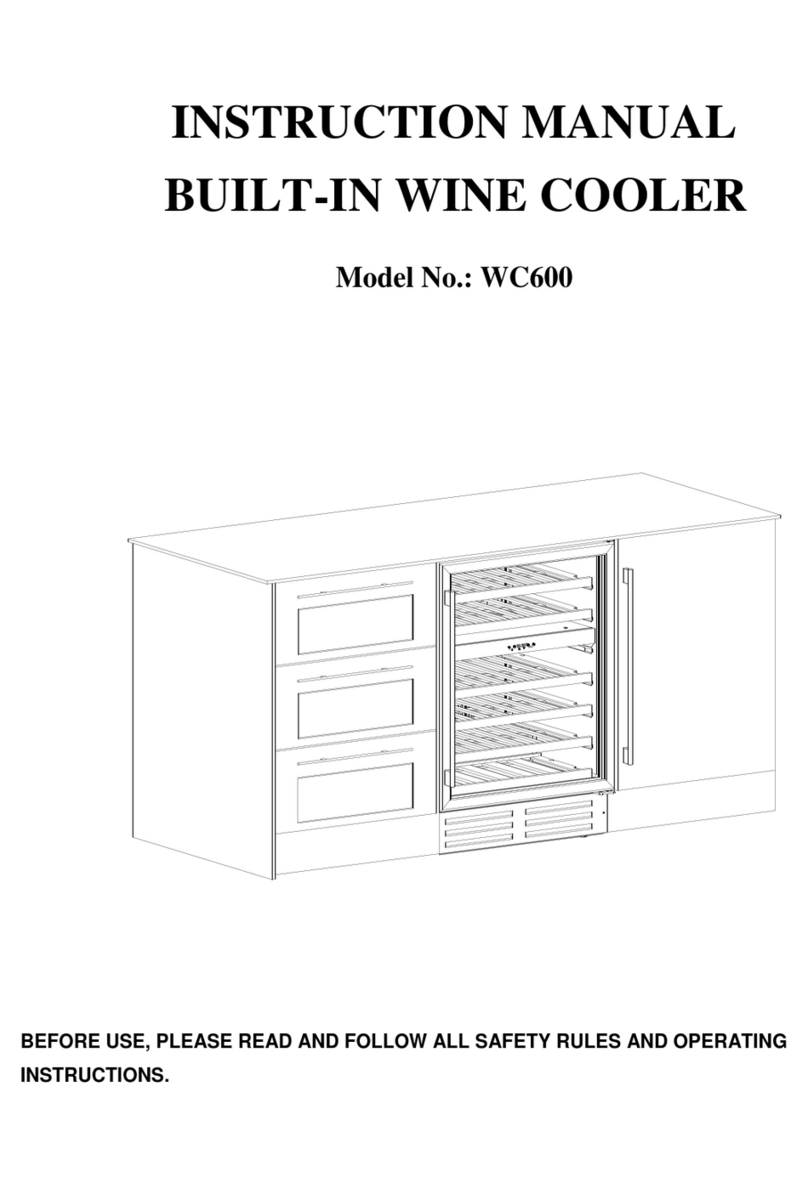
Apelson
Apelson WC600 instruction manual
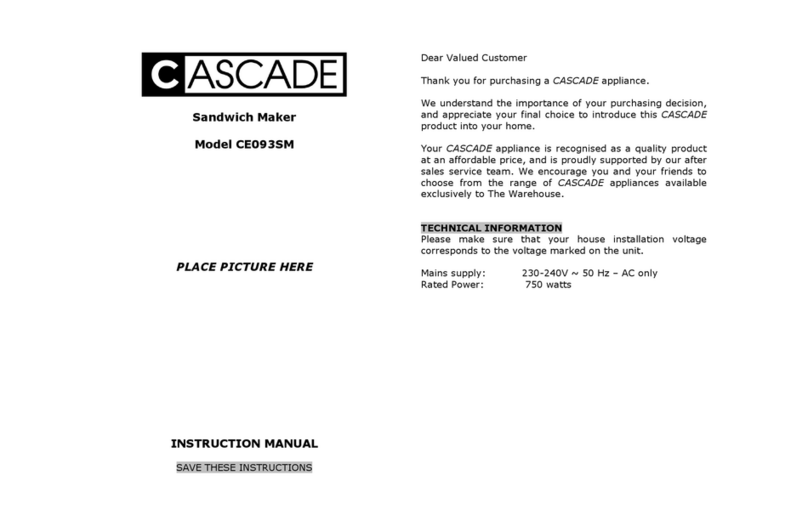
Cascade
Cascade CE093SM user guide
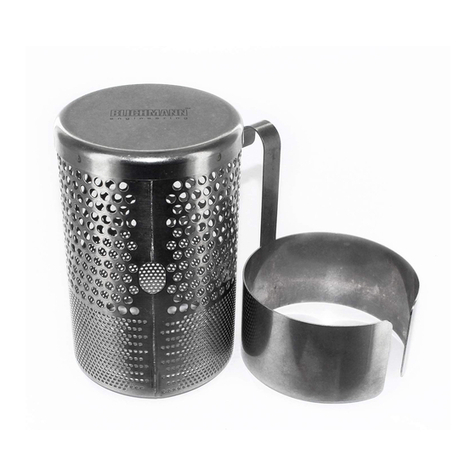
Blichmann Engineering
Blichmann Engineering HopBlocker Operation, Assembly & maintenance manual
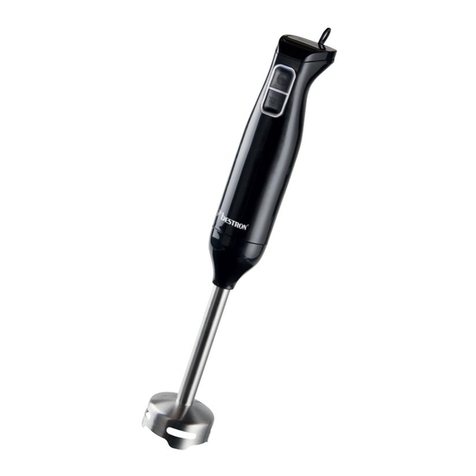
Bestron
Bestron ASM250Z instruction manual
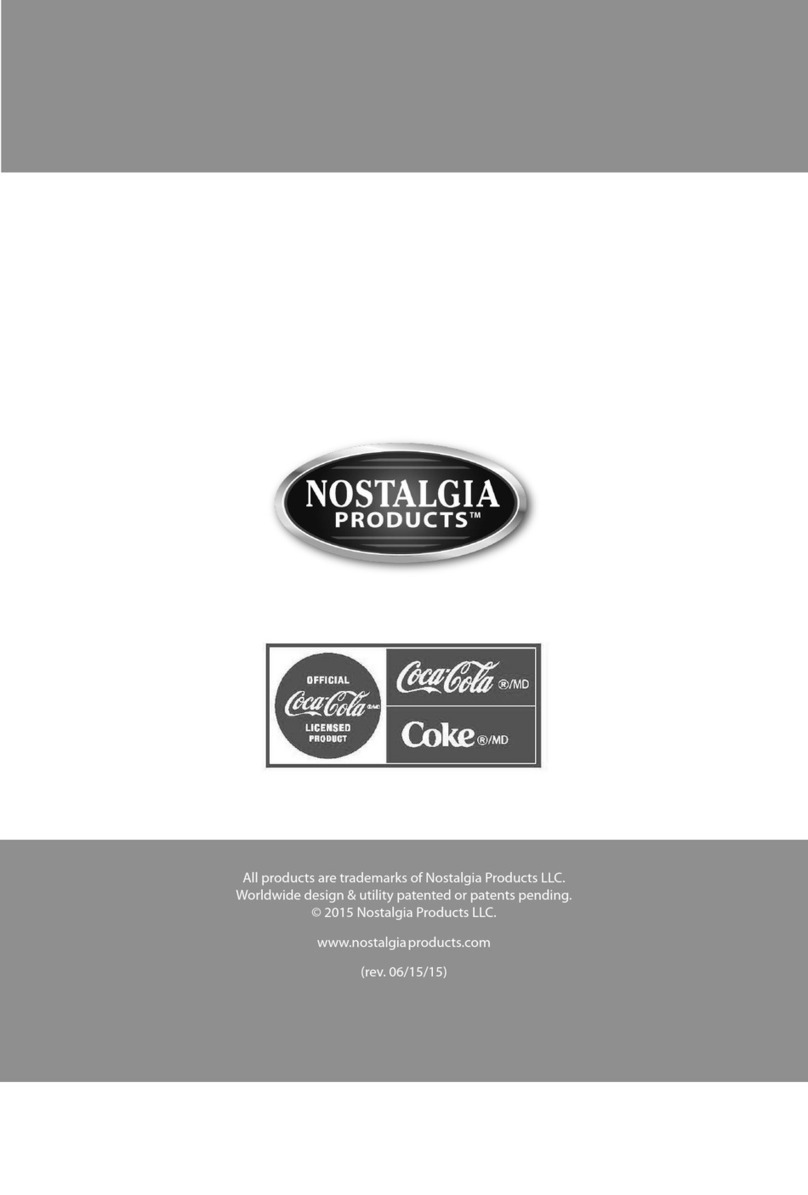
Nostalgia Electrics
Nostalgia Electrics Coca-Cola Series Instructions and recipes

Zojirushi
Zojirushi SV-G instruction manual
